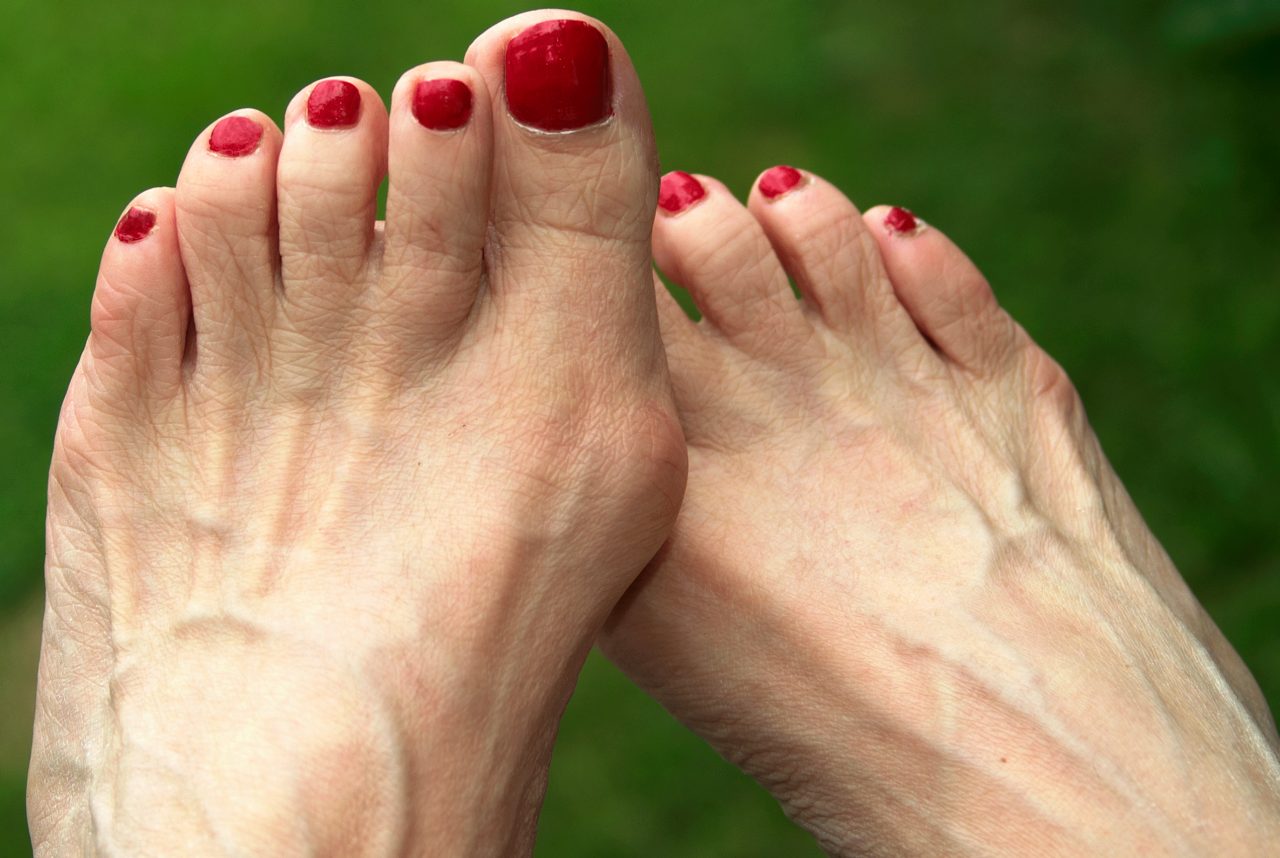Bunion Causes and Treatments

A bunion is more than a problem with how your foot looks: it can be painful and interfere with walking. Find out what causes bunions and how to treat them.
Maybe you were wearing sandals during the summer and noticed a bony bump on the side of one of your big toes. Or perhaps you put on some favorite boots when colder days arrived, and one boot was uncomfortable because of a bump by your big toe — and the bump seemed larger and more painful than it was the previous year.
The culprit for this type of foot problem is almost certainly hallus valgus. That’s the medical term for a condition more commonly known as “having a bunion.”
YOU MIGHT ALSO LIKE: Why Do My Feet Ache?
Bunion causes and symptoms
Bunions result from pressure on your big toe forcing the joint to bend, over time, toward the other toes, instead of staying in a normal, straight position. This leads to the bone and tissues at the joint of the big toe moving out of normal alignment.
In some people, the big toe can be pushed so much that it eventually crosses over and on top of the second toe, causing additional problems with footwear and irritating adjacent toes.
Anyone can get a bunion, but they are more common in women, the American Academy of Orthopaetic Surgeons (AAOS) notes. Wearing pointed toe shoes that squeeze and force toes together increases the chance of a bunion developing. But there are other reasons people get bunions.
Bunions have a genetic component. The condition tends to “run” in families, and people with flat feet or low arches are more likely to develop bunions. Men and women with inflammatory conditions, such as rheumatoid arthritis, and neuromuscular conditions also tend to be more susceptible to bunions.
While a small bunion may not cause any serious discomfort other than, perhaps, needing wider shoes for comfort, bunions do usually progress and become larger. Common symptoms include pain, tenderness, redness, and inflammation of the bunion. Some people experience a burning sensation or foot numbness caused by a bunion, the American College of Foot and Ankle Surgeons (ACFA) notes. A callus may develop on the bony bump, and the skin on the bottom of the foot can harden.
Bottom line: Treatment can relieve and correct bunions
If bunions are not treated and corrected, they may irritate adjacent toes and cause or increase arthritis-type foot pain and stiffness. In addition, restriction of your big toe can interfere with normal walking.
Talk to your doctor about your bunion to find the right treatment for you. In most cases, bunions can be treated without surgery, the AAOS explains.
Non-surgical ways to treat bunions include:
- Change and adapt your footwear. In most cases, switching to shoes that don’t compress your toes can help relieve bunion pain. You can often use a stretcher to enlarge the toe area in the shoe for the foot that has the bunion.
- Padding. Protective "bunion-shield" pads are available at most drugstores and online. They help cushion the painful area over the bunion. It’s important, however, to test the pads for a short period before you use them daily; the size of the pad may increase the pressure on the bump.
- Orthotics and other devices. Your doctor may recommend wearing either over-the-counter or custom-made shoe inserts (orthotics) to relieve pain and pressure on your bunion. Your doctor may also prescribe a splint to be worn at night, which will keep your big toe in a straighter position to relieve pain. Toe spacers, placed between your toes, can also help relieve the misalignment of toes resulting from a bunion.
- Pain relief with icing and medications. Applying ice several times a day for 20 minutes at a time can reduce swelling (but don’t apply it directly to your skin). Over-the-counter nonsteroidal anti-inflammatory medications (like ibuprofen and naproxen) can help reduce swelling and pain from a bunion, too. If your bunion is related to arthritis, your doctor may prescribe other medications to relieve symptoms, the AAOS notes.
What you need to know about bunion surgery
If the non-surgical strategies don’t adequately relieve your bunion pain, and the discomfort is interfering with your quality of life and daily activities, talk to your doctor about a referral to a foot and ankle surgeon.
If surgery is recommended, there are several surgical options, the ACFA explains, but the goals are the same — to relieve the foot pain and deformity caused by the bunion.
Surgical procedures available to treat bunions remove the bump of bone on the side of your foot and correct changes in the bony structure of your foot and in any soft tissue changes that may have occurred over time.
To decide which surgery procedure is right for your case, your surgeon will consider the extent of the bunion and related bone deformity, based on x-rays and other imaging tests. Additional factors, including your age, health, medical history, and activity level will be taken into consideration. How long it takes to recover after bunion surgery varies, depending on the procedure.
Updated:
June 20, 2022
Reviewed By:
Janet O’Dell, RN